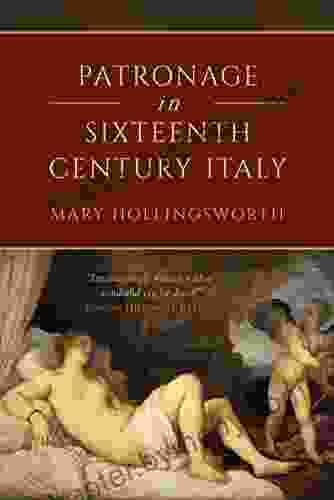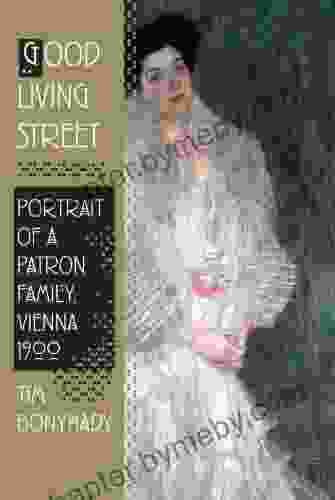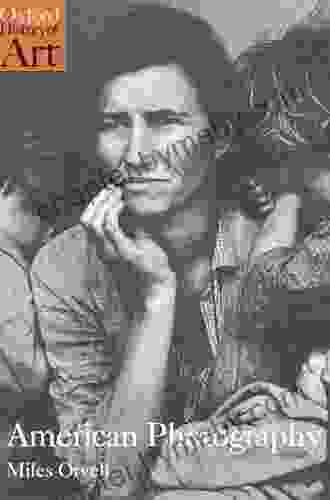Patronage in Sixteenth Century Italy: Unveiling the Secrets of Italian Art History

4.6 out of 5
| Language | : | English |
| File size | : | 12651 KB |
| Text-to-Speech | : | Enabled |
| Screen Reader | : | Supported |
| Enhanced typesetting | : | Enabled |
| Print length | : | 654 pages |
| Lending | : | Enabled |
The sixteenth century in Italy witnessed an unprecedented explosion of artistic creativity, giving birth to some of the most iconic masterpieces of Western art. This extraordinary artistic output was largely driven by the patronage of wealthy and influential individuals and institutions. Understanding patronage in this period is crucial to fully appreciate the art of the Italian Renaissance.
The Nature of Patronage
Patronage refers to financial and other forms of support provided by individuals or organizations to artists. In sixteenth-century Italy, patronage took various forms, including commissions for specific works of art, the provision of workshops and materials, and the establishment of academies and schools of art.
Types of Patrons
- The Church: The Catholic Church was the largest and most significant patron of art in sixteenth-century Italy. Its demand for religious artworks, such as altarpieces, frescoes, and sculptures, supported a vast number of artists.
- The State: City-states like Venice, Florence, and Rome also played an important role as patrons, commissioning public works that celebrated civic pride and political power.
- Wealthy Individuals: Wealthy families, such as the Medici in Florence and the Este in Ferrara, were prolific patrons of art. They sought to enhance their status, demonstrate their piety, and cultivate their refined taste.
The Influence of Patrons
Patrons exerted significant influence on the art of their time. They determined the subject matter, style, and scale of artworks. For example, the Medici family's patronage of artists like Botticelli and Michelangelo reflected their humanist values and desire to glorify Florence as a center of learning and culture.
Beyond their financial support, patrons also often provided artists with valuable guidance and feedback. They served as advisors, critics, and collaborators, shaping the artistic vision and execution of the works they commissioned.
Case Study: The Medici Family
The Medici family of Florence is one of the most celebrated examples of patronage in sixteenth-century Italy. Their patronage of artists like Leonardo da Vinci, Michelangelo, and Raphael played a crucial role in shaping the High Renaissance.
Lorenzo de' Medici, known as "The Magnificent," was a particularly influential patron. He established the Medici Villa in Fiesole as a center for artistic and intellectual exchange. He also founded the Medici Academies to promote the study and appreciation of art.

Patronage and Artistic Innovation
Patronage fostered artistic innovation in several ways. By providing financial support, patrons allowed artists to experiment with new materials, techniques, and styles. For example, Leonardo da Vinci's groundbreaking use of sfumato in the Mona Lisa was made possible by the patronage of the Medici family.
Furthermore, patrons often requested specific types of works that pushed the boundaries of artistic creativity. The demand for monumental frescoes and ceiling paintings led to the development of techniques like trompe l'oeil, creating the illusion of three-dimensional space.
The Legacy of Patronage
The patron-artist relationship in sixteenth-century Italy had a profound and lasting impact on art history. It established a model of patronage that continued to influence art production in Europe for centuries.
Moreover, the artworks created under patronage in this period became cultural treasures, admired and studied by generations to come. They provide invaluable insights into the beliefs, values, and aesthetic sensibilities of their time.
Patronage played a pivotal role in the flourishing of Italian art during the sixteenth century. By understanding the motivations and influence of patrons, we can better appreciate the masterpieces created in this extraordinary period. Patronage is not merely a financial transaction but a dynamic relationship that shaped the course of art history.
Further Reading
- Patricia Fortini Brown, Venice and its Empire: From the Late Middle Ages Through the Early Modern Period
- John Najemy, A History of Florence: 1200–1575
- Craig Kallendorf, Humanism and Tyranny: Studies in the Italian Trecento
4.6 out of 5
| Language | : | English |
| File size | : | 12651 KB |
| Text-to-Speech | : | Enabled |
| Screen Reader | : | Supported |
| Enhanced typesetting | : | Enabled |
| Print length | : | 654 pages |
| Lending | : | Enabled |
Do you want to contribute by writing guest posts on this blog?
Please contact us and send us a resume of previous articles that you have written.
 Book
Book Novel
Novel Page
Page Chapter
Chapter Text
Text Story
Story Genre
Genre Reader
Reader Library
Library Paperback
Paperback E-book
E-book Magazine
Magazine Newspaper
Newspaper Paragraph
Paragraph Sentence
Sentence Bookmark
Bookmark Shelf
Shelf Glossary
Glossary Bibliography
Bibliography Foreword
Foreword Preface
Preface Synopsis
Synopsis Annotation
Annotation Footnote
Footnote Manuscript
Manuscript Scroll
Scroll Codex
Codex Tome
Tome Bestseller
Bestseller Classics
Classics Library card
Library card Narrative
Narrative Biography
Biography Autobiography
Autobiography Memoir
Memoir Reference
Reference Encyclopedia
Encyclopedia Mark Young
Mark Young S J Fore
S J Fore Megan Pugh
Megan Pugh Vinton Mccabe
Vinton Mccabe Michael Ovitz
Michael Ovitz Rodney Ford
Rodney Ford Matsuri Hino
Matsuri Hino Douglas Stone
Douglas Stone Max Sherman
Max Sherman Mick Ebeling
Mick Ebeling Paul L Gay
Paul L Gay William Blackwell
William Blackwell Peter Genovese
Peter Genovese Mike Massimino
Mike Massimino Michael Petrou
Michael Petrou Melanie Pearson
Melanie Pearson Michael Golay
Michael Golay Miles Orvell
Miles Orvell Pam Young
Pam Young Matthew Goodman
Matthew Goodman
Light bulbAdvertise smarter! Our strategic ad space ensures maximum exposure. Reserve your spot today!

 Dwayne MitchellUnleash the Power of Friendship and Adventure with "Love You Guys: Naruto...
Dwayne MitchellUnleash the Power of Friendship and Adventure with "Love You Guys: Naruto...
 Isaac AsimovUnleash Your Inner Chef: A Culinary Adventure with Matilda The Ramsay Bunch...
Isaac AsimovUnleash Your Inner Chef: A Culinary Adventure with Matilda The Ramsay Bunch... Henry GreenFollow ·4.7k
Henry GreenFollow ·4.7k Michael ChabonFollow ·9k
Michael ChabonFollow ·9k Eddie BellFollow ·7k
Eddie BellFollow ·7k Eugene PowellFollow ·8.6k
Eugene PowellFollow ·8.6k Mike HayesFollow ·18.4k
Mike HayesFollow ·18.4k Owen SimmonsFollow ·12.4k
Owen SimmonsFollow ·12.4k Andy ColeFollow ·2.6k
Andy ColeFollow ·2.6k Bernard PowellFollow ·15.5k
Bernard PowellFollow ·15.5k

 Henry James
Henry JamesCold War Fighter Pilot Story: A Captivating Tale of...
Enter the Cockpit of...

 Rudyard Kipling
Rudyard KiplingYour Body Your Baby Your Choices: The Essential Guide to...
Pregnancy and...

 Fabian Mitchell
Fabian MitchellMichelle Obama: An Intimate Portrait - A Must-Read for...
Michelle Obama is a prominent figure in...

 Juan Butler
Juan ButlerUncover the Secrets of the Dead Land Warshawski Novels
Prepare to delve...
4.6 out of 5
| Language | : | English |
| File size | : | 12651 KB |
| Text-to-Speech | : | Enabled |
| Screen Reader | : | Supported |
| Enhanced typesetting | : | Enabled |
| Print length | : | 654 pages |
| Lending | : | Enabled |












